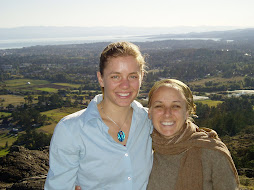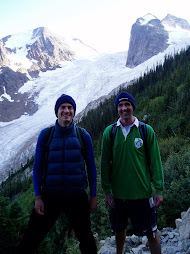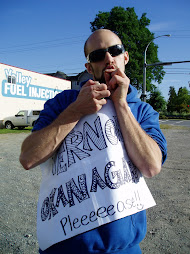
There are some things in life which seem to allure us in inexplicable ways. We are pulled into its energy field until we finally surrender into the realization that we must do something, or go somewhere. Then finally we take the step and enter into it. India, the land of unity in diversity with a smorgasbord of spirituality and life lessons on every corner, has had that role in my life for some time. I’ve felt drawn to it like a moth to a flame and yet I found all sorts of reasons to avoid it until February. It was then that I finally decided to give India a chance, to let go of all my negative preconceived notions of what it was and decided to allow it to just be, accepting it exactly as it was. That acceptance took some time but it ultimately came in the flash of a single moment, when I hit rock bottom, looked at my pale and tired face in the mirror, stopped fighting and finally gave in.
I had planned to travel to Darjeeling, a mountain hill station to the east of Nepal, as a jump off point into India but the universe had other plans for me. After I’d finally decided to come and had obtained my visa, I was stuck in Kathmandu with all roads leading to India closed due to road strikes and political demonstrations. I just breathed and said, “if it’s meant to be, it will happen.” The following morning, a road opened up, the road to Lumbini, the birthplace of the Buddha. I got on the first bus and it was apparently the last bus to come through before the road closed again for another week.
Through an amazing twist of fate, I was granted a travel companion to ease my insecurities about crossing the border alone. Piers, an English, fellow Vipassana meditator, offered me a ride, free of charge across the border in the taxi he’d hired. At this point, I unknowingly embarked on a Buddhist pilgrimage through Nepal and India. On our way to Shravasti, the old capitol of India in the time of the Buddha, we stopped for tea and samosas and just like that, one of my worst fears of India began to manifest. By the time we arrived at the Korean monastery, I was ready to begin my four day involuntary purge of everything in my system, besides my organs... although I think I might’ve seen a kidney come out in the process... On the fourth day of consistent vomiting and diarrhoea without food and depleted of all energy, I caught a glimpse of my sickly face in the mirror and suddenly a thought occurred to me; this is just a way to cleanse myself of all of the negativity I’ve been carrying around with me... Surrender to it and it will pass. So I did, and that night... it did.
Funny enough the timing of my recovery and the arrival of an astonishing opportunity coincided quite nicely, once again providing an example of the synchronistic nature of my journey. Our plan was to visit Sarnath next and Piers happened to overhear the men at the monastery saying “Thai group” and “Sarnath.” It was just too good to pass up so I went to the group leader and asked if we could join them and he offered us a free 12 hour ride on their deluxe luxury tourist bus leaving the following morning.
In the days to follow, we spent time in Sarnath at a Dhamma gathering then Piers had a course scheduled and we parted ways. I met with Lisu from Finland and we continued on together to Bodhgaya, the place of the Buddha’s Enlightenment. I wish I could describe the feeling that swept over my body the first time I entered the temple grounds, hosting a descendant of the Bodhi tree under which Gautama Buddha became Enlightened 2500 years ago. The energy of a particular spot had never been so apparent to me as in that moment. Lisu and I sat and meditated under that very tree for the afternoon and delighted in the nourishing energy our surroundings had to provide. It then became evident to me that the words spoken by a friend in Lumbini; “Your karma is clearly bringing you abundance, as you’ve been given the opportunity to see the places of the Buddha which others only dream about” were absolutely true.
Upon completion of my little pilgrimage, Lisu and I ventured to Varanasi to celebrate my 29th birthday... eeeek! The only thing that I wanted to do on that day was to take a boat ride on the Ganga river and see for myself why Varanasi is meant to be the holiest city in India. The Ganga flows throughout India and its waters are used for washing, bathing, fishing, travelling and dying. Many come to Varanasi to have the ashes of their loved ones burnt on the gats and sprinkled into the Ganga, as one who is said to be cremated this way will obtain liberation from the cycle of birth and death and will not be forced to live another life. As we drifted in our boat down the river, we were witness to the amazing colours of life along the gats. Hundreds of people participated in the evening pujas (offerings to the gods) while others, only metres away, watched as their loved one perished in the burning fires. I was celebrating the day of my birth and was witness to those who had completed their lives. It was a miraculous rendition of the cycles of birth and death that we all experience in our lives. Varanasi served to prove the many wrong who advised me that it was full of annoyances and amplified challenges. I felt at peace in this holy city and in turn, it found peace in me and alleviated me of the burden of those lessons.
My next stop was Bangalore, a whopping 48 hour train ride south of Varanasi. I chose to study yoga at Svyasa University, which is dedicated to Swami Vivekananda, the man who brought yoga to the west. I left the travel trails to walk on the path of jnana yoga (intellect) but after a week of solid discipline beginning at 5 am and finishing at 9:30 pm 7 days a week, I was longing for fun and freedom. Luckily there were others in my course who felt the same and we all formed an incredible bond which supported us all through our 30 days. Aside from our busy schedule of asanas (physical postures,) pranayama (breathing practice,) lectures and indulgence in lots of food, we found many opportunities to have a good laugh. Part of the program was to learn Kriyas, cleansing techniques in which we use Jala Neti (pouring salt water between the nostrils,) Sutra Neti (Pulling a sutra through the nose and out the mouth,) and my personal favourite Vomina Dauti (drinking 2 litres or more of warm salt water then making ourselves vomit it all out.) The practices were quite intense and sometimes uncomfortable, but our Korean friend Kim helped us laugh through it by showing us his water baby, caused by the inability to vomit 4 litres of water, which he “gave birth” to later in the privacy of his washroom. I’ve provided some beautiful pictures to give you a visualization of these exercises, but don’t try this at home...
The Holli festival of India landed conveniently in the middle of our course which helped us to all get to know each other really well (if we didn’t already after barfing together) by covering one another in various colours of powdered paint. It was an absolute blast and an amazing release of pent up energy. We were also offered the opportunity to meet Ama, the hugging guru. It was the first time that I’d knowingly been in the presence of a divine soul and it was a truly remarkable feeling. She began to sing shortly after our arrival and I got lost in the sounds and music, completely engulfed in each and every word, although unbeknownst of their meaning, and suddenly it was as if something reached up inside of me and pulled out all of the emotions I held onto so tightly, and then I cried. Through those words my soul had a conversation with hers which told me everything that I needed to hear in that moment. The experience was powerful and liberating and I felt blessed to be a part of it. I also received my hug, which lasted about 0.25 seconds before and after a procession of thousands who’d come to receive darshan from Ama. And as quickly as it began, it was over but I walked away with a little something that I haven’t quite been able to wrap my fingers around as of yet.
The month finally finished after an eternity, and when looking back only days later, we felt as though it had gone by in a flash, the contrast between struggling through the difficult times and then remembering and missing the good ones. The course taught me what yoga really is through a myriad of lessons involving perseverance, acceptance and finding the meaning and the good in even the toughest circumstances. For the week following the course, I learned how to laugh my way through the challenges of life in a laughter yoga teacher training. I cannot describe how absolutely ridiculous this course was as we spent 5 days laughing our butts off in a way none of us had done since childhood. It was great! After those five days it became so evident to me the importance of laughter in uniting the world as one. I even performed a laughter session with some of my fellow passengers on the train to Delhi as it seemed suiting to lighten the mood after a clash between two groups which created some disturbance. Once we started laughing, it was as if the walls had been broken down, walls that the children of the other group climbed right on over and conquered with their laughter. The realization that it is hard to hold onto something when you’re laughing became real with that little experiment and it brought along with it harmony and unity in the purest form.
I went to the south of India to learn and I was provided a space in which to do so. After the course I realized that each spot I walk on is a space in which I can learn. Every circumstance I experience, each person I encounter, every single challenge I face and each word I hear has meaning in it. I have become a student of life simply because I’ve opened myself to receiving whatever it is that India has in store for me. As I continue on to the North and back into travel mode, I am finding myself laughing and smiling at everything. I feel like a child again, with India as my teacher and playground in equal measure.
I'm back home on the 23rd so let me know if you wlll be in town and want to hang out!
View pictures at: http://picasaweb.google.co.in/KusumaTiffany/PhotosForAprilBlog?feat=directlink













